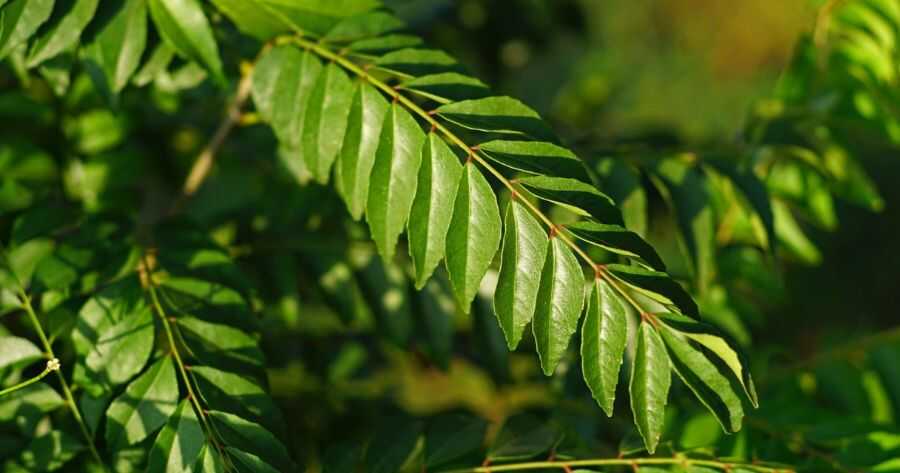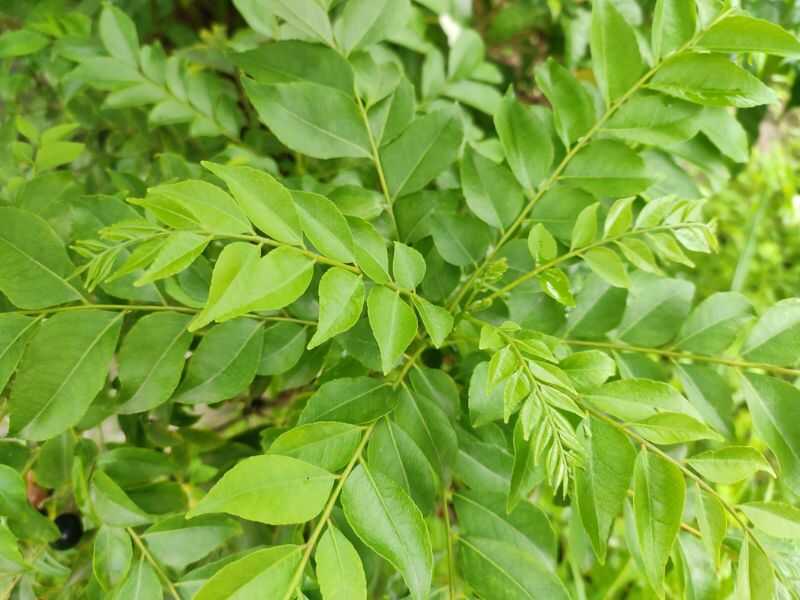
If you live in the USA and are looking for a new plant to grow, curry leaves might be the perfect choice! Curry leaves (Febrifugum Arvense) are used in Indian cooking and have a variety of benefits, including being a good source of Vitamin A. They can be used fresh or dried, and they’re relatively easy to cultivate.
Curry leaf is a perennial herb that can be found in temperate and tropical areas all around the world. It is commonly used as a spice, both in cooking and as a medicinal herb. In this blog post, we’ll give you everything you need to know about how to grow curry leaves in the USA.
We’ll go over where to get started, what kind of soil and climate curry leaves need, how to water and fertilise them, and when to harvest. By the end of this post, you’ll be ready to start growing your own curry leaves!
Varieties and Cultivars
There are a variety of different curry leaf varieties and cultivars to choose from, so it's important to select the right one for your needs. Here are a few to consider:- Regular Curry Tree
- Dwarf Variety
- Gamthi
1. Sawtooth Curcuma x intermedia: This is a tall variety with narrow leaves that has a strong flavor and aroma. It's well-suited for Indian cuisine and can be used in both hot and cold dishes.
2. Orange Curcuma x radicea: This is a medium-sized variety that has long, thin leaves that are bright orange in color. It has a moderate flavor and aroma, making it ideal for western cuisine.
3. White Curcuma x officinalis: This is an extremely popular variety because its leaves have a delicate, white color and mild flavor. It's commonly used in Thai curries and can also be used in western dishes like omelets or stir fries.
Propagation

To grow a curry leaf plant in the USA, you will need to start with a seedling or young plant. You can find these at your local nursery or online. Once you have your plant, it is important to choose a location that gets plenty of sunlight and has well-drained soil. Curry leaves prefer warm weather, so if you live in a cold climate, you may want to grow your plant indoors.
Once you have chosen a location, it is time to prepare the soil. Curry leaves do not like wet or soggy soil, so make sure to add some organic matter to improve drainage. If you are planting more than one curry leaves plant, be sure to space them about 18 inches apart so they have room to grow.
After the soil is prepared, you can plant your curry leaves plant. Gently remove it from its container and place it in the hole you have created. Backfill with soil and water thoroughly. Curry leaves plants are drought tolerant, but they will need regular watering during their first growing season.
Now that your plant is in the ground, it is important to give it some support. Stake tall plants so they don't fall over in windy weather. Also, be sure to mulch around the base of your plant to help retain moisture and keep weeds at bay.
With proper care, your curry leaves plant will thrive and produce beautiful foliage for many years to come!
Seeds and Cuttings
Curry leaves are best grown from seed or cuttings. If you are growing from seed, plant the seeds in a well-draining soil mix and keep them moist until they germinate. Once they have germinated, transplant them into individual pots or into your garden bed.If you are growing curry leaves from cuttings, take a 6–8-inch cutting from an existing plant and remove the bottom leaves. Dip the cutting in rooting hormone and plant it in a well-draining soil mix. Allow the cutting some time to root while keeping the soil moist. Once it has rooted, transplant it into an individual pot or your garden bed.
The Best Time to Plant

Assuming you would like tips on when to plant curry leaves in the USA, late spring or early summer is typically the best time. This allows the plant ample time to grow and establish itself before colder weather sets in. Keep in mind that curry leaves are tropical plants, so they prefer warm weather and lots of sunshine.
If you live in an area with a shorter growing season, start your plants indoors about six to eight weeks before you plan to transplant them outdoors. Curry leaf grows best in warm climates where temperatures never fall below 25 degrees Celsius or rise above 40 degrees Celsius. It also prefers soil that is moist but well-drained, and requires full sun exposure.
When growing curry leaf, make sure to space it evenly throughout your garden so that it has enough room to grow. You can start growing curry leaf by planting the seeds in late spring or early summer, and water them regularly until they germinate. Once they do, you should water them only when the soil dries out completely. Keep the plants well-maintained by weeding and watering regularly.
Curry Leaf Plants Care
Curry leaves are a common ingredient in Indian cuisine, and their popularity is growing in the United States. If you want to grow your own curry leaf plant, there are a few things to keep in mind.First, curry leaves prefer warm weather and lots of sun. If you live in a colder climate, you can grow your plants indoors near a sunny window. Second, the soil should be well-drained and rich in organic matter. You can add some compost or manure to the soil before planting.
Third, when watering your plant, be sure not to overwater it. Curry leaves are susceptible to root rot, so it’s best to err on the side of too dry rather than too wet. Finally, once your plant is established, you can harvest the leaves as needed for cooking. Simply cut them off at the stem and wash them before using.
Pests and diseases
Unfortunately, there are many pests and diseases that will attack the roses if they are not kept healthy. To avoid such infestations, take special care to give your rose bush plenty of sunlight, water, and fertilizer. The best way to treat an infestation is to remove the affected plant from the garden and destroy it. This will help prevent the spread of disease or pests to other plants in your garden.Some common pests include aphids, caterpillars, slugs, spider mites, whiteflies, and Japanese beetles. These pests can all be controlled with insecticide sprays or dust. Many of these products can be purchased at your local nursery or home improvement store. Be sure to follow the directions on the package carefully when applying any pesticide to your rose bush.
There are also a number of diseases that can affect roses, including black spot, powdery mildew, rust, and Verticillium wilt. Black spot is a fungal disease that appears as black spots on the leaves of the rose bush. Powdery mildew is another fungal disease that appears as a white powdery substance on the leaves and stems of the rose bush.
Rust is a disease that causes orange or reddish-brown spots on the leaves of the rose bush. Verticillium wilt is a disease that can cause the leaves of the rose bush to turn yellow and then drop off.
If you notice any of these diseases on your rose bush, you should remove the affected plant from your garden and destroy it. You can also treat these diseases with fungicide sprays or dust. Be sure to follow the directions on the package when applying any pesticide to your rose bush.
How to Harvest

The best time to harvest curry leaves is in the morning, after the dew has evaporated but before the sun gets too hot. Cut off individual leaves or snip off stems with a sharp knife or pruning shears.
Curry leaves can be used fresh or dried. To dry, place them on a paper towel or wire rack in a cool, dark place for about a week. Once dry, store it in an airtight container until ready to use.
Uses of Curry Leaves
Curry leaves are an important ingredient in many Indian and Sri Lankan dishes. They are used to add flavour and aroma to curries, soups, stews, and other savoury dishes. Curry leaves are also used in Ayurvedic and Siddha medicine for their medicinal properties.Curry leaves can be used fresh, dried, or powdered. To use fresh curry leaves, wash them thoroughly and then chop them finely. Dried curry leaves can be bought from most Asian grocery stores. To use dried curry leaves, soak them in warm water for 10 minutes before using. Powdered curry leaves can be bought from most health food stores.
Growing Tips
There are many different types of curry leaves, but the most common one is known as kari patta. It has a strong flavor that makes it a popular choice for those who enjoy spice. If you're growing curry leaves, there are some tips that you need to know in order to ensure success.First and foremost, make sure that you choose the right variety for your climate and soil conditions. Secondly, make sure to water them regularly and keep them evenly moistened throughout the growing season. Finally, be patient-though they do take time to grow well, curry leaves are well worth the effort!
Read On : How to Grow Garlic in Your Yard (Easy Steps to Grow From Cloves)
Frequently Asked Questions

Can you grow your own curry leaves?
Yes, you can definitely grow your own curry leaves. These leafy greens are a staple in many Indian dishes and can be quickly grown in warmer climates using a soil-based propagation method.
Once the roots have grown in, you can move the plants into pots or the ground, where they will keep growing new leaves all summer long.
Curry leaves are also low in calories and contain significant amounts of dietary fiber, vitamin C, potassium, and Vitamin K as well as various other antioxidants that make them an excellent source of nutrition.
They are also high in iron which is beneficial for strengthening red blood cells. So if you're looking to add some spice to your diet or want to increase your intake of health-promoting nutrients, growing your own curry leaves might be a good option!
How can we grow a curry leaves plant at home?
They can be grown indoors or outdoors, and they need little care once they have established themselves. However, you will need to water them regularly and fertilize them occasionally. You can also protect them from the sun by shielding them with a shelter when necessary.
Can you grow curry leaves in the US?
Yes, you can grow curry leaves in the US. However, they will need to be grown indoors due to the fact that they are not frost-tolerant. Additionally, it is important to remember that curry leaves are highly invasive and will quickly take over your garden if you don't keep control of them.
How do you take care of curry leaves in the US in winter?
Unfortunately, there is no good answer to this question as most curry leaves will not survive the winter in the US. While some people may be able to store them in a fridge, they are likely going to lose their flavor and aroma over time.
Sadly, there isn't really anything that you can do with curry leaves unless you live in an area where they grow naturally (which is not very common). In the US, curry leaves can be kept fresh in a cool, dark place for up to four months. However, after four months they may start to rot and become unusable.
It is important to keep them isolated from other plants and flowers so that they don't absorb their fragrance or flavor. Once you have used them all, it is best to compost them or put them into your soil as an amendment.
How do curry leaves grow in cold climates?
Curry leaves grow well in cold climates as long as they are given enough sunlight and water. In colder climates, the curry leaves may need to be supplemented with extra light so that they do not go dormant during colder months. Also, these plants will need more water to stay healthy and continue to grow flowers.
Where can I get fresh curry leaves in the U.S.?
Curry leaves can be found in most supermarkets across the U.S., but they tend to be sold out quickly. If you are looking for fresh curry leaves, your best bet is to check online or at specialty stores like Whole Foods or Trader Joe's.
Conclusion
Overall, it is not difficult to grow curry leaf plants in the USA as long as you provide it with the proper care and attention. With a little bit of effort, you can have a healthy and thriving curry leaves plant that will provide you with an abundance of fresh leaves to use in your cooking. Do you have any tips for growing curry leaf plants? Share them with us in the comments below! - Garden Lot
Tags:
Garden
